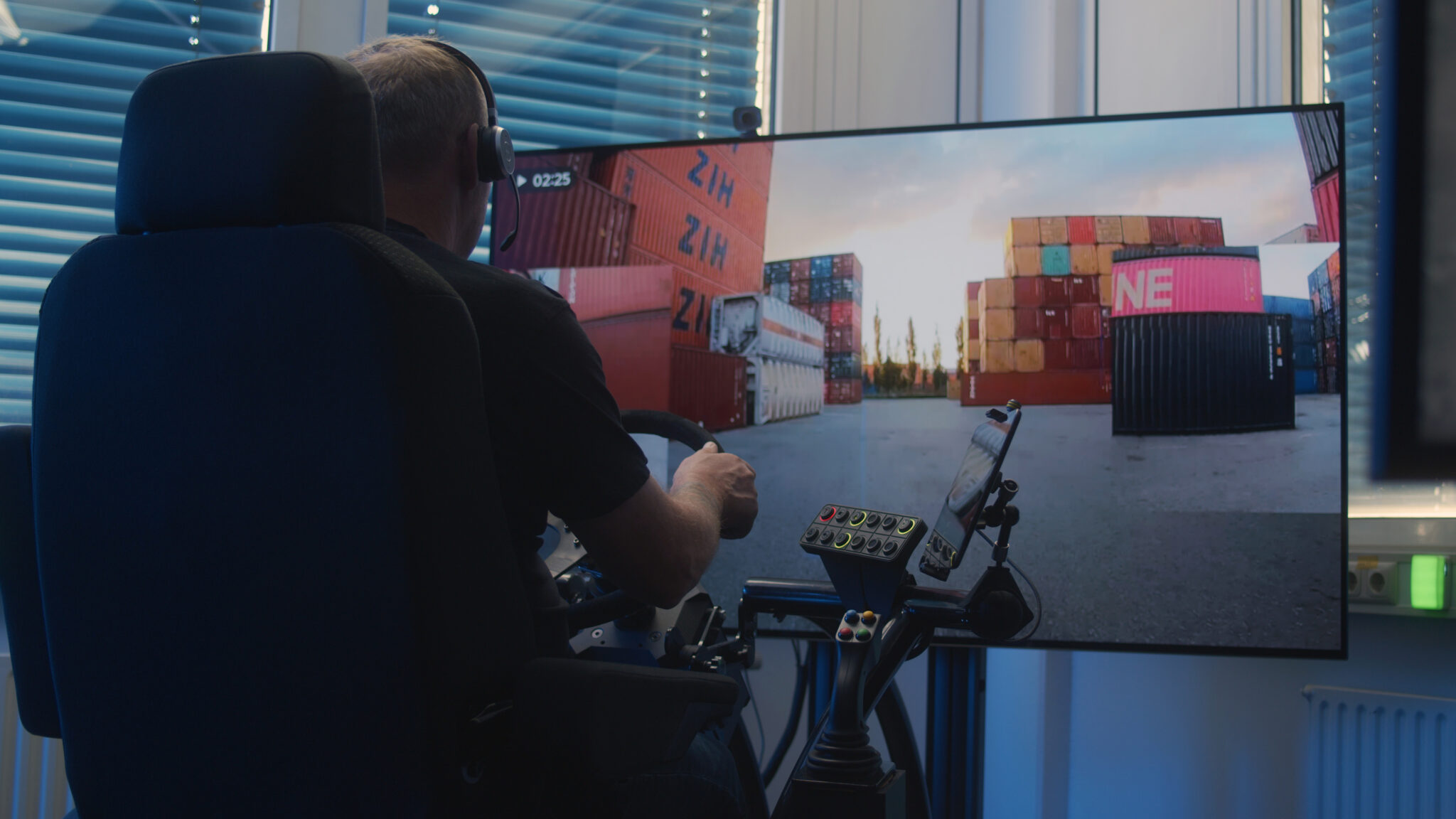A pilot project for highly automated lorry and electric container logistics is being launched at the HHLA TK Estonia terminal in Tallinn in partnership with HHLA International. HHLA Next, Hamburger Hafen und Logistik AG’s innovation unit, is investing in Munich-based start-up FERNRIDE. The goal of the project is to develop solutions for the gradual automation of trucks within live operations.
HHLA Next is investing in FERNRIDE’s innovative solution to drive forward automation and sustainability in logistics and to address the lack of truck drivers. En route to automated transport logistics, the unique approach of FERNRIDE lies in the gradually increasing autonomy of trucks and tractor units. The combination of autonomous driving technology of the vehicles and human expertise in remote operation already offers a reliable service available now in live operations. This creates an immediate added value and speeds up the journey towards more sustainable logistics.
Simone Lode, Managing Director of HHLA Next: “We at HHLA Next invest in digital and sustainable business models in maritime logistics. We see great potential in autonomous driving solutions, also because of the current lack of truck drivers. With FERNRIDE, we are investing in a company that has already implemented a viable solution with a partner network of respected companies from industry and logistics with very good results. In addition, the project highlights our focus on sustainable logistics.”
Hendrik Kramer, CEO FERNRIDE: “HHLA is the perfect partner to use our platform for autonomous electric trucking in ports. The advantages of remote control can already be actively used by a part of the workforce within ports. With our solution, truck drivers can now also benefit. HHLA shares our ambition to scale this technology internationally, and the port in Tallinn offers ideal conditions in which to lay the foundation for this.”
HHLA Next is providing the new portfolio company with access to subsidiaries in the HHLA Group. A pilot project will start in early 2023 at the HHLA TK Estonia terminal in Tallinn – the first FERNRIDE project at a container terminal. The goal of the project is to determine the technology’s operational reliability in automated container handling and to validate the technology’s viability for future business opportunities.
Philip Sweens, Managing Director of HHLA International: “This partnership with FERNRIDE as part of the pilot project in Tallinn will help us to jointly explore new opportunities and to create workflows at our international terminals that are future-oriented and sustainable. We look forward to our collaboration with FERNRIDE and hope this project will be the beginning of a long partnership.”
Martin Isik, CCO FERNRIDE: “With our joint project during ongoing, live operations, we are creating the basis for series development and the adaptation of our solution to container logistics. We will use our gradual automation approach to demonstrate the high value proposition of the FERNRIDE platform for customers at container terminals. Thanks to HHLA International, we have also found the ideal partner for rapid scaling in the European region.”
The technology start-up FERNRIDE, which has approximately 100 employees, equips trucks and tractor units with sensors and cameras so that they can be remote-controlled via mobile networks. Teleoperators at a computer workstation that resembles a vehicle cockpit take remote control of the vehicles. The teleoperator receives and sends targeted commands in real time by controlling the gas pedal, brakes, steering wheel and joystick. FERNRIDE’s algorithms can be further trained using data from the real-life operation in order to roll out additional autonomous functions.
Truck drivers can be more flexibly deployed through the use of this new technology, which has a positive impact on operating procedures. In addition, the option to work remotely increases both the attractiveness of the job profile and safety on the respective premises.





